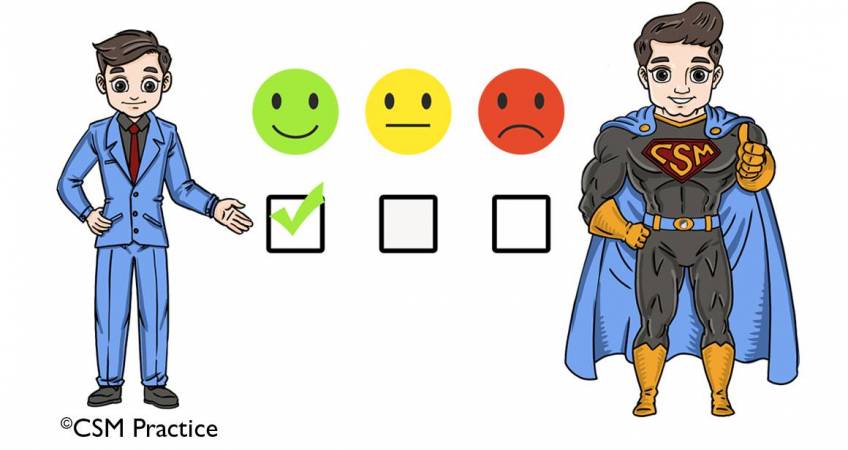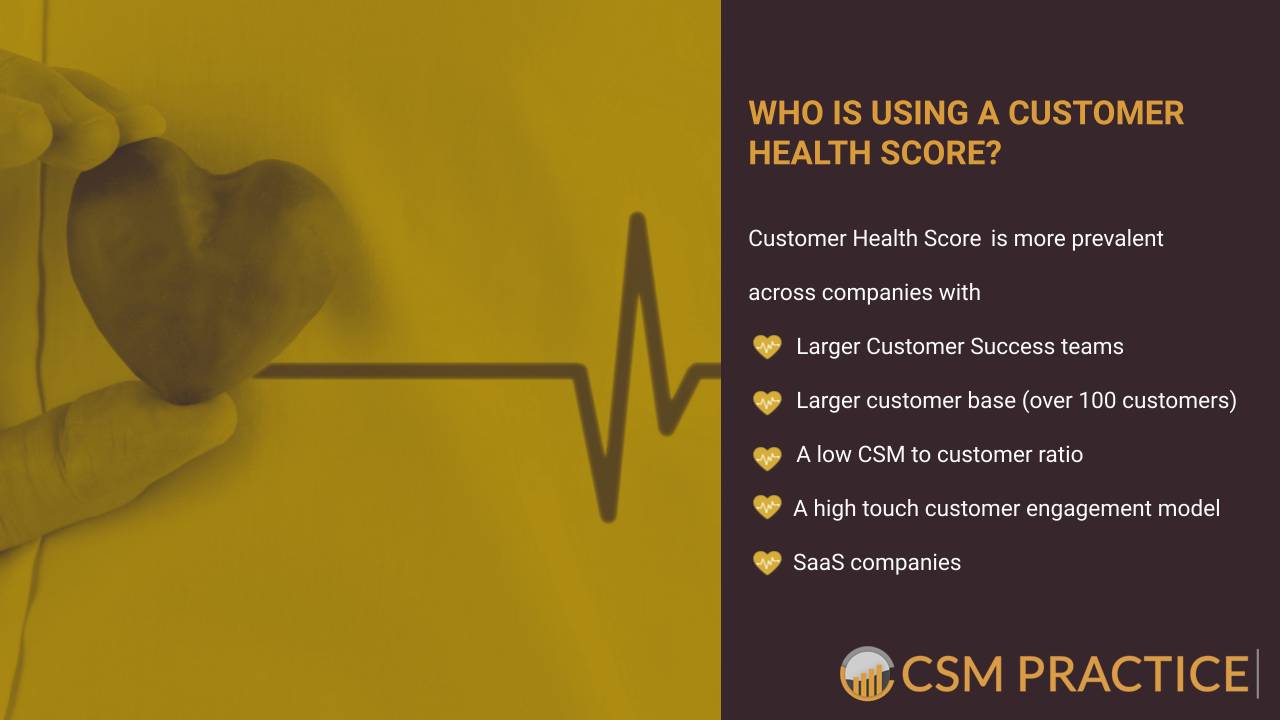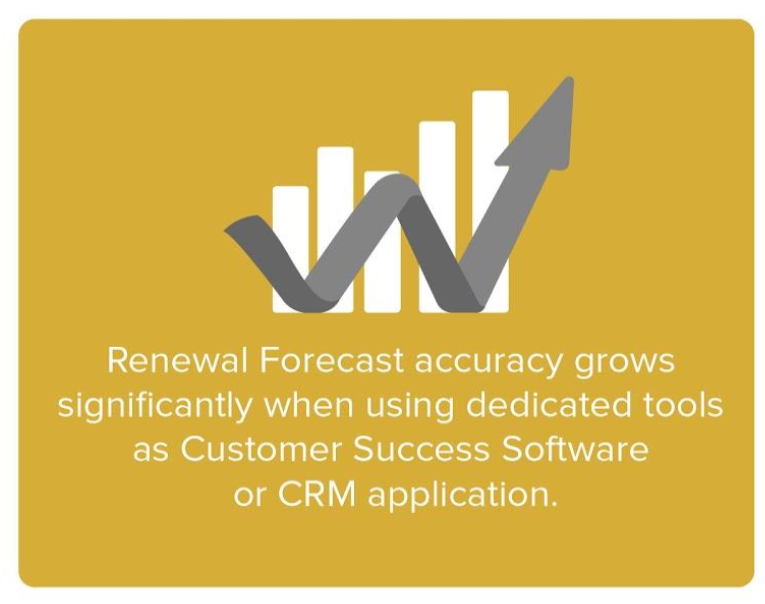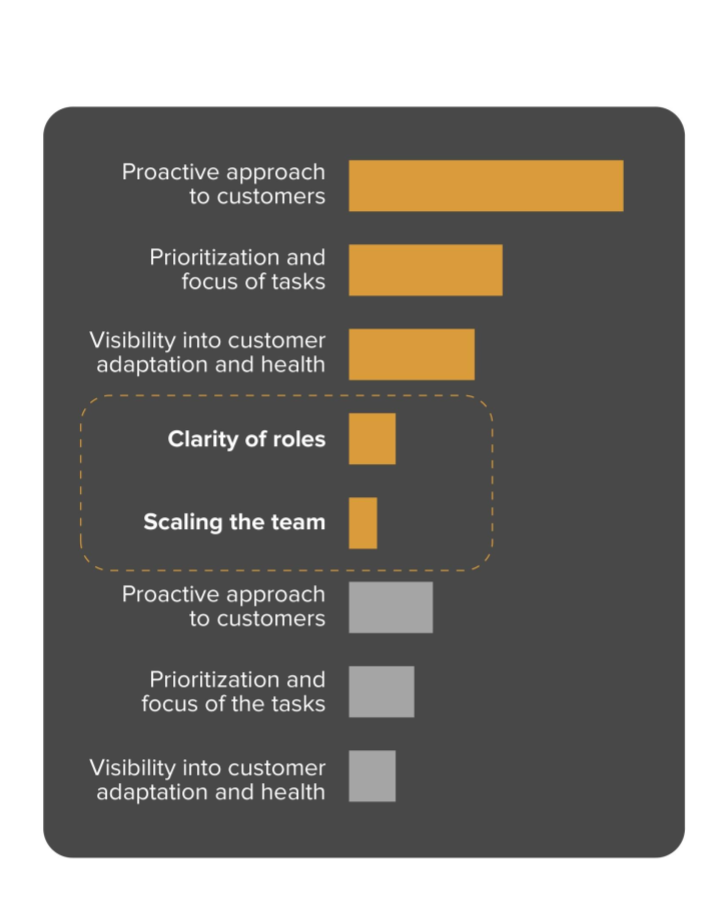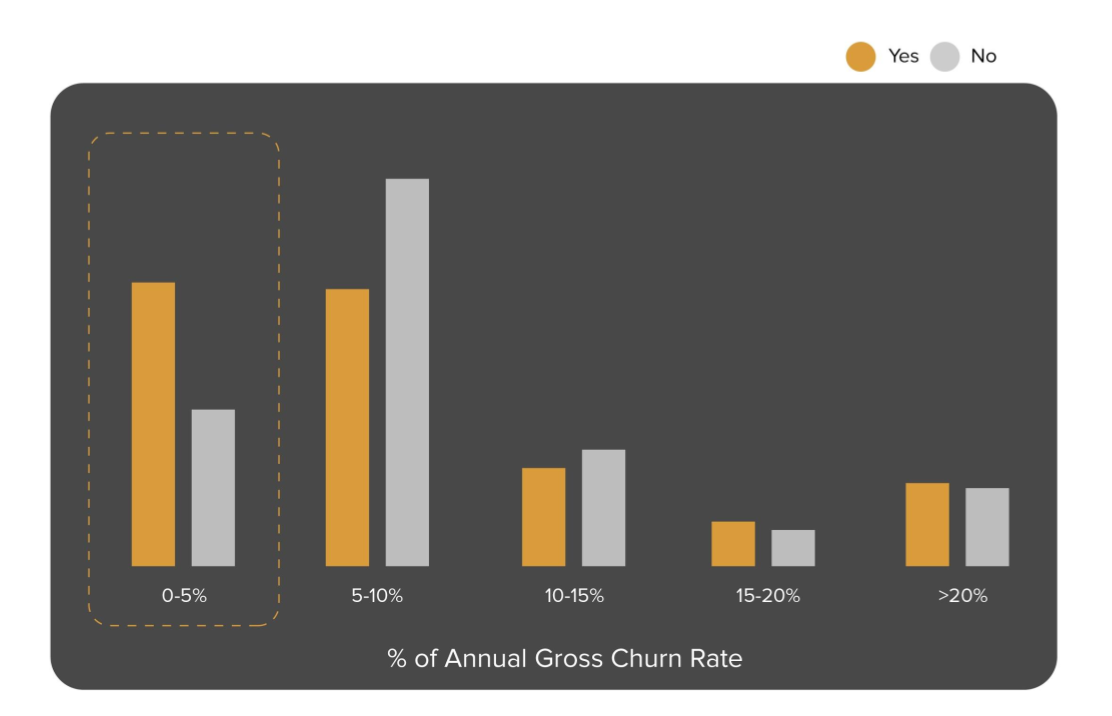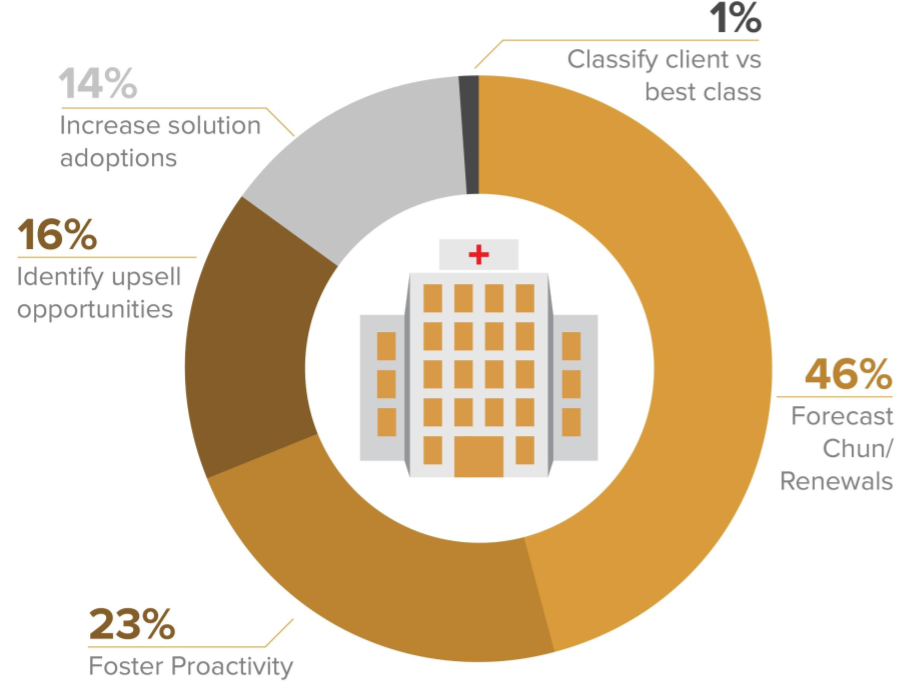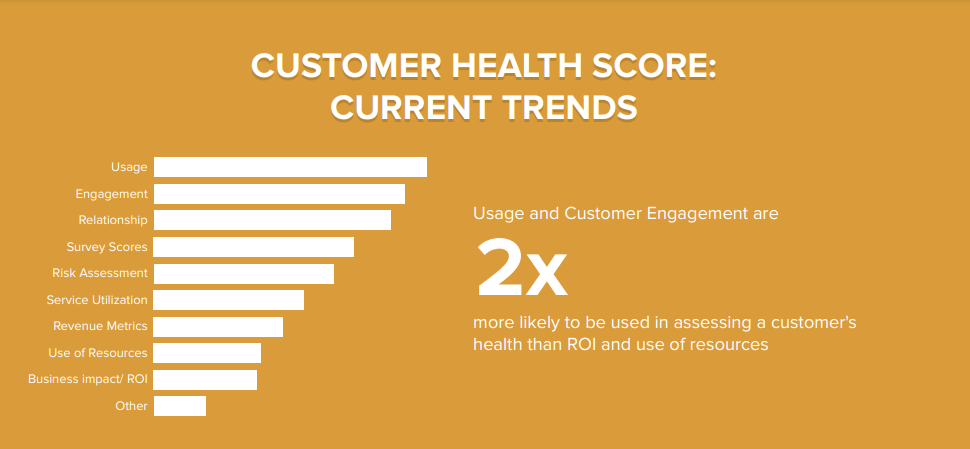Takeaways from CSM Practice Customer Success Health Score Survey Results
In Q4 of 2020, CSM Practice synthesized its survey results from close to 200 of US-Based SaaS companies. The purpose of the survey was to assess the validity of common industry assumptions on customer health scores. It also sought to understand the major trends of customer health scores.
This blog will discuss takeaways and trends in customer success about one of the most popular tools – the customer health score. For the full survey results, download our INFOGRAPHIC. For additional insights, visit our YouTube Channel to watch CSM Practice Advisory Board members discuss the survey results.
Who Is Using a Customer Health Score?
According to the survey results, customer health scores are mostly used by large customer success teams. It is more common to be developed and maintained by SaaS companies with CSM to customer ratio of 60 or less. To add, the said ratio is where a higher-touch engagement model is prevailing.
Analysis of the data revealed the following key insights on the types of organizations that currently maintain a customer health score:
- The customer health score is more common by 31% points in companies with a large customer success team.
- The customer health score is more common by 7% in companies that have more than 100 customers.
- The customer health score is more common by 30% in SaaS vs. On-Premise or services organizations.
- Companies, where CSMs manage less than 60 accounts, are more likely to develop and maintain a customer health score.
One of CSM Practice’s advisory board members, Christy Augustine, Chief Operating Officer of Bloomreach, shared her viewpoint on these findings. “This survey data shows a clear impact of Health Scores for organizations looking to manage account churn risk. However, what was surprising to find was how prevalent the Health Score is for high-touch models. With those key accounts, it is just as important to maintain our data-driven approach in accounts.”
Download the survey results from the Infographic here:
Customer Health Scores are More Popular in High Touch Engagement Models
One of the surprising results included is the fact that Customer Health Scores are more prevalent in companies with a more frequent client-CSM touchpoint cadence.
Maranda Dziekonski, VP Customer Success at Swiftly, shared her perspective on the matter:
“Teams with a high-touch engagement model are using health scoring models more than others. However, it is the teams with tech-touch or low-touch engagement models that should heavily invest in customer health scores.”
The True Impact of Customer Health Score
#1 – Clarity of the CSM Role
According to the survey results, most customer success teams noted three major strengths regardless of maintaining a customer health score:
- A proactive approach to customers
- Concentrate and focus on tasks
- Visibility into customer adaptation and health
However, maintaining a customer health score allows customer success teams to achieve clarity of roles and the ability to scale. The survey results demonstrate that by adopting the use of a customer health score, a customer success manager has better clarity of mission and goals.
#2 – Lowering Churn Rate
Surprisingly, the survey results show there is no clear correlation between customer health scores and revenue from upsell/ add-ons sales. Moreover, the correlation analysis result revealed no direct connection between a lower churn rate and the use of customer health scores.
That said, maintaining a customer health score was more predominant in organizations with a lower than 5% gross churn rate.
That said, trends in 2020 revealed that companies using a customer health score had better control over their churn rate.
CSM Practice found that the lowest churn rates were achieved by those who are using a customer success software/CRM application. This conclusion is regardless of whether they maintained a customer health score or not.
#3 – Forecasting Renewals
The majority of companies adopt a customer health score to forecast renewals. However, CSM Practice concluded that there’s no clear correlation between the prevalence of a customer health score and renewal forecast accuracy.
To be specific, CSM Practice found that 46% maintain a customer health score to forecast churn or renewals. Contrarily, only 1% of companies only maintain customer health to benchmark against a best-in-class customer and overall ROI.
Customer Health Score Development and Maintenance Trends
The analysis of the health score survey results revealed interesting trends in the development and maintenance of a customer health score:
- 30% update their customers’ health score on a monthly basis, whilst 2% update it annually.
- 79% track their customer health score using customer success software, whilst 14% still use spreadsheets.
- 33% of companies update their customer health score manually, whilst 29% update theirs automatically.
Calculating the Health Score
CSM Practice survey results show that usage, customer engagement, and relationships are the top 3 metrics to be used in calculating the customer health score. Tracking these metrics stands in complete contradiction to how customers assess their relationship with the vendor – value achieved, also known as the return from their investment (ROI).
In fact, CSM Practice found usage and engagement levels are twice more likely to be used in assessing a customer’s health.
Peter Armaly, Senior Director of Customer Success at Oracle and CSM Practice’s advisory board member shared his insights:
“I recommend that CS leaders increase their investment in their development and maintenance of health scores. A true health score should be a representation of the customer’s sentiment. That sentiment is formed by all touchpoints with the vendor, not just those with the Customer Success organization. Be serious about health scores by assigning responsibility to people who have experience of working with data and customers.”
Defining the Customer Health Score
Customer Health Score is an essential metric for all businesses. It’s important to revisit customer health scores to evaluate if the measures accurately predict account risk. Otherwise, they need to be adjusted accordingly.
For instance, launching a new product launch may require the Customer Success team to revisit their customer health score calculation.
The occurrence of a drastic change, say in the company’s business model, also signals to revisit the customer health score.
Finally, any changes in the market, like trends and customer usage, may require revisiting the customer health score. Irit Eizips, CEO of CSM Practice, expands on best practices in building the customer health model featuring Ben Winn, from Catalyst.
There are several benefits of revisiting the formula of health score. Conversely, survey results revealed that 26% never update their customer health score algorithm. Nearly, 48% update their customer health score algorithm annually, while 26% update the health score algorithm as often as quarterly.
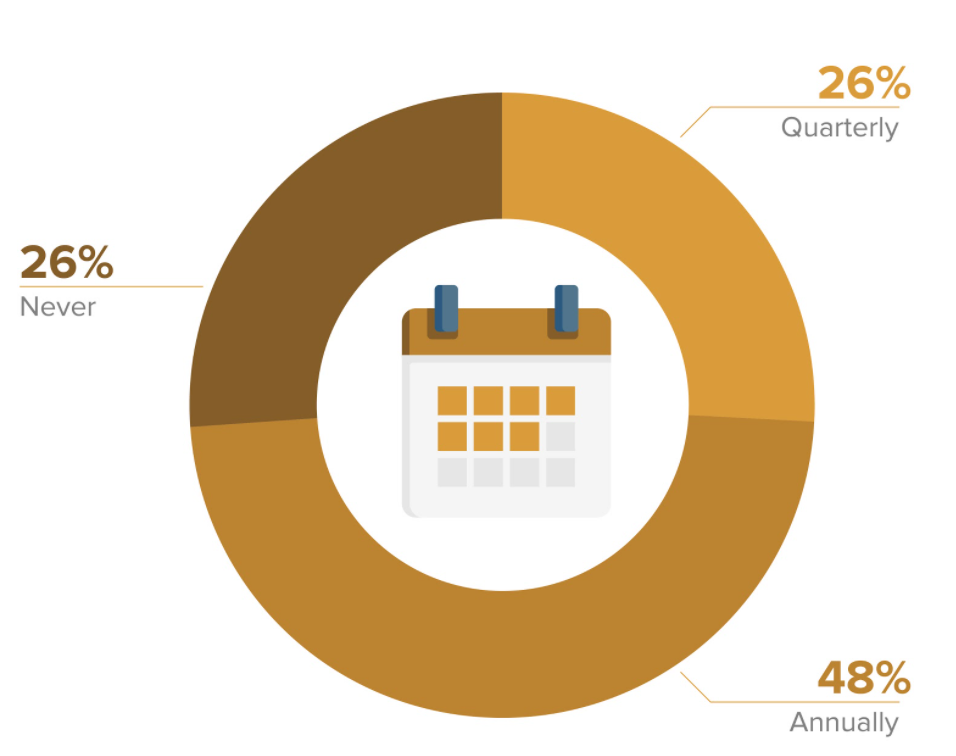
How to Score Customer Health
The customer health score should serve as a benchmark tool that helps your customer success manager understand how each customer advances toward becoming the best in class. Your customer success team will become more proactive by shifting the focus of customer health score on empowering customers.
Instead of attending fire drills, they will proactively shift the conversations with customers to how they can be fully invested in your solutions, provide advocacy for your company, and appropriate resources needed to align their processes and people to leverage your solution to the max.
Furthermore, your customer health score should be aligned with the role and responsibilities of your customer success manager. The customer health score should include metrics that highlight the correct behavior the customer success manager should embrace, so they prioritize well and perform their job better. When the customer health score is fully aligned with the customer success team’s responsibilities, it helps the team become more proactive.
Having a customer health score in place is a worthy investment, however, it is not enough.
To gain maximum value from their customer health score tool, companies should also consider the following important initiative:
-
Develop a playbook that provides step-by-step instructions to address a health score metric that turns red.
- Develop a quarterly process whereby your leadership team reviews the most recent customer health score trends for the entire install base.
- Schedule an annual meeting to assess the efficacy of your health score and whether the algorithm requires an update.
Expert Advice from our Customer Success Advisory Board
We asked our advisory board members to draw from their experience and provide tips on customer health scores. They provided the following recommendations:
“Keep it simple as it evolves over time. Build a good response system and measure at renewals if a bad health score correlates in non-renewals.”
“A health score model is not a static measurement. It should be revisited to avoid missing out on some valuable data that may cause adjusting the overall customer strategy. The frequency of revisiting and updating a health score depends on the desired outcomes.”
“Encourage teams to look at the business outcomes and ROI in the health score and give that higher weighting where possible.”
“The algorithm of your Customer Health Score should be reviewed at least annually, twice a year if possible. That way, adjustments can be made to optimize value for the customer.”
“Customer success leaders should increase their investment in the development and maintenance of customer health scores.”
Calculating a Perfect Customer Health Score
The development and maintenance of a customer health score are complicated. Yet, we are hopeful that our survey results provide you with information to help you become a world-class Customer Success organization. We are confident this will help you build out, calculate, and maintain the perfect customer health score.
Download the full survey results SLIDES here: Customer Health Score Facts & Trends
CSM Practice offers a unique methodology encompassing the entire customer lifecycle, including onboarding, adoption, upsells, cross-sells, and renewals. You can reach out to us at CSM Practice if you need to help to understand your customers’ health. That is what CSM Practice is all about. We ensure your customers achieve their desired outcomes while maximizing your product/service.
Need help to calculate the perfect customer health score? Reach out to find out more about our firm’s service offerings.

